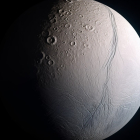Astronauts will be able to breathe oxygen thanks to artificial photosynthesis

the future space missions It could witness a major game changer thanks to a revolutionary technological advancement in which a team of scientists is creating artificial photosynthesis devices that astronauts will be able to use in the future.
While oxygen is not a problem here on Earth, it is outside of Earth. Once we leave the confines of our world, whether to the “nearby” International Space Station, the Moon, or our next target, Mars, Our own oxygen production is really much needed.
Astronauts will be able to breathe oxygen thanks to artificial photosynthesis machines
How will we breathe on Mars?
But there is an invention that could make a difference in space exploration. Most oxygen in places more or less familiar to humanity, such as the International Space Station (ISS), is obtained through electrolysis, a chemical process that uses electricity to split water into hydrogen and oxygen. On the other hand, a separate system converts exhaled carbon dioxide into water and methane. Although it is not a passive method1.5 kW requires an energy budget of 4.6 kW, which is more or less one-third of the total energy required to operate the life support system and environmental control systeml (ECLSS) for the International Space Station. That’s a lot.
Saving space and fuel is vital to our spaceflight. But what about when we go to Mars? How do we breathe there? Carrying oxygen on the two-year voyage to the Red Planet takes a lot of space and resources for a single supply. You have to look for an alternative.
artificial photosynthesis
That’s why the new study was published in the journal Connect with natures describes in sufficient detail what will happen to these revolutionary devices under the influence of sunlight. There is a way to provide oxygen, electricity and fuel to spacecraft and stations on the Moon and Mars without carrying cargo. The proposal is to extract all this with one small device capable of performing photosynthesis but artificially.
The research, which involved teams from the University of Warwick, the University of Bremen and the EPFL (Ecole Polytechnique Federale de Lausanne), provided encouraging evidence. Research supported by the European Space Agency (ESA) indicates this These devices can operate not only on the Moon but also on the harsh terrain of Mars.
“Finding more efficient and environmentally friendly ways to mimic parts of Earth’s atmosphere using available resources is a promising step towards our goal of building an entire ecosystem inside a box,” explains Brigitte Lamaze, Environmental Control and Life Support Engineer at the European Space Agency.
How do they work?
By coating semiconductor materials with metal catalysts, these artificial photosynthetic systems create oxygen from water and sunlight, effectively eliminating the need for electricity. This process is similar to photosynthesis in plants and takes water as input and involves the separation of light harvesting and chemical production. While plants rely on chlorophyll to absorb light, The proposed device will use semiconductor materials coated with metal catalysts to support the desired chemical reaction. According to his calculations, artificial photosynthesis could be applicable even to Mars, where sunlight arrives less intensely than on Earth due to this planet’s greater distance from our star.
Mars?
“There are years of intense research remaining before we can harness this technology in space.. However, mimicking crucial aspects of photosynthesis in nature could offer us some distinct advantages. Our study showed that the theoretical underpinnings are strong. “
reference:
- Byron Ross et al., Evaluation of the Technological Feasibility of Photoelectrochemical Devices for Oxygen and Fuel Production on the Moon and Mars, Nature Communications (2023). DOI: 10.1038/s41467-023-38676-2
- Yingfang Yao, Lu Wang, Xi Zhu, Wenguang Tu, Yong Zhou, Rulin Liu, Junchuan Sun, Bo Tao, Cheng Wang, Xiwen Yu, Linfeng Gao, Yuan Cao, Bing Wang, Zhaosheng Li, Wei Yao, Yujie Xiong, Mengfei Yang Weihua Wang, Zhigang Zhou. Extraterrestrial photosynthesis by Chang’E-5 lunar soil. Joule, 2022; DOI: 10.1016/j.joule.2022.04.011

“Pop culture advocate. Troublemaker. Friendly student. Proud problem solver.”









:quality(70)/cloudfront-us-east-1.images.arcpublishing.com/metroworldnews/KAMPU362RJDWBEEJAHCQQIMWEE.jpg)



